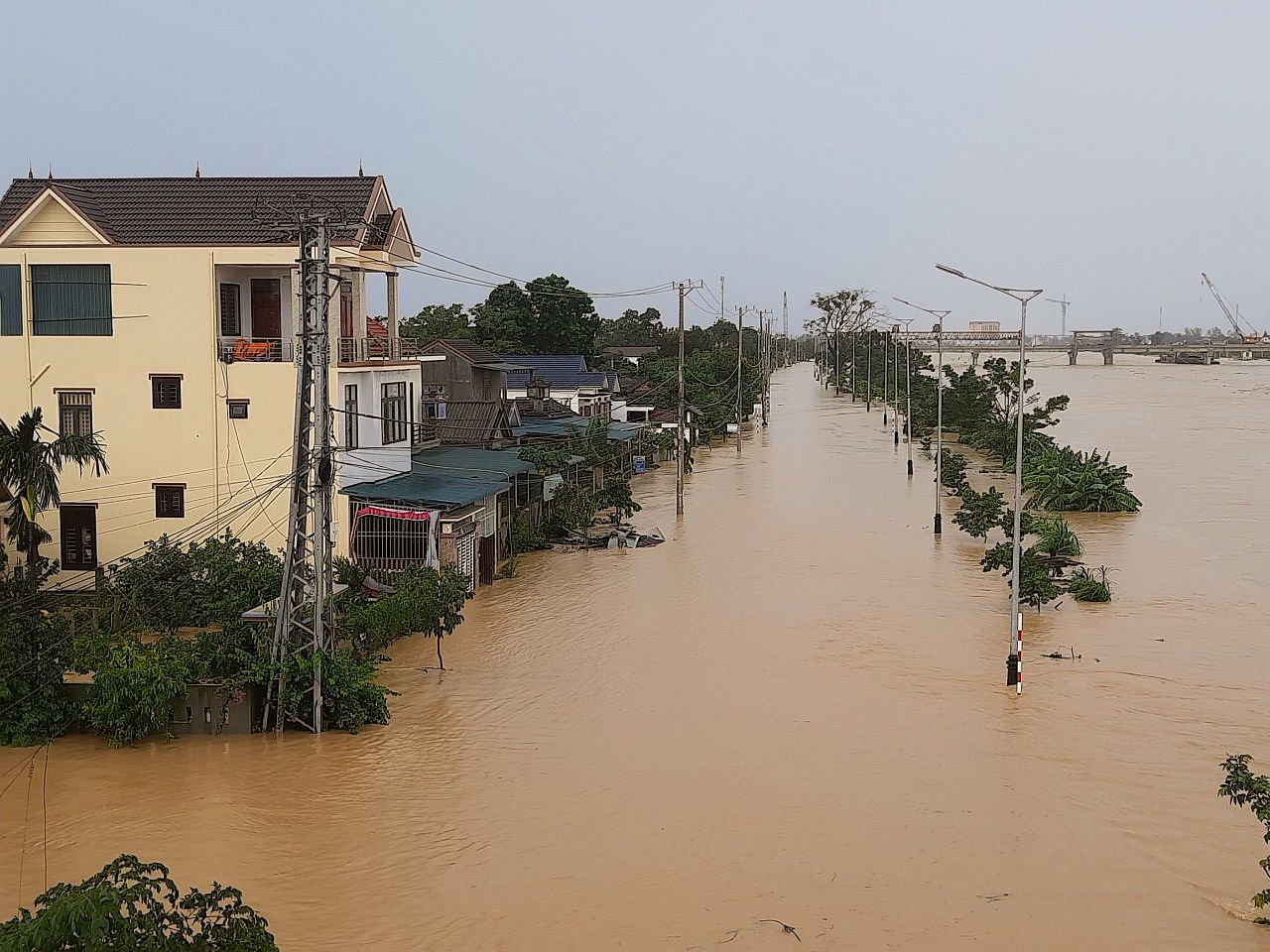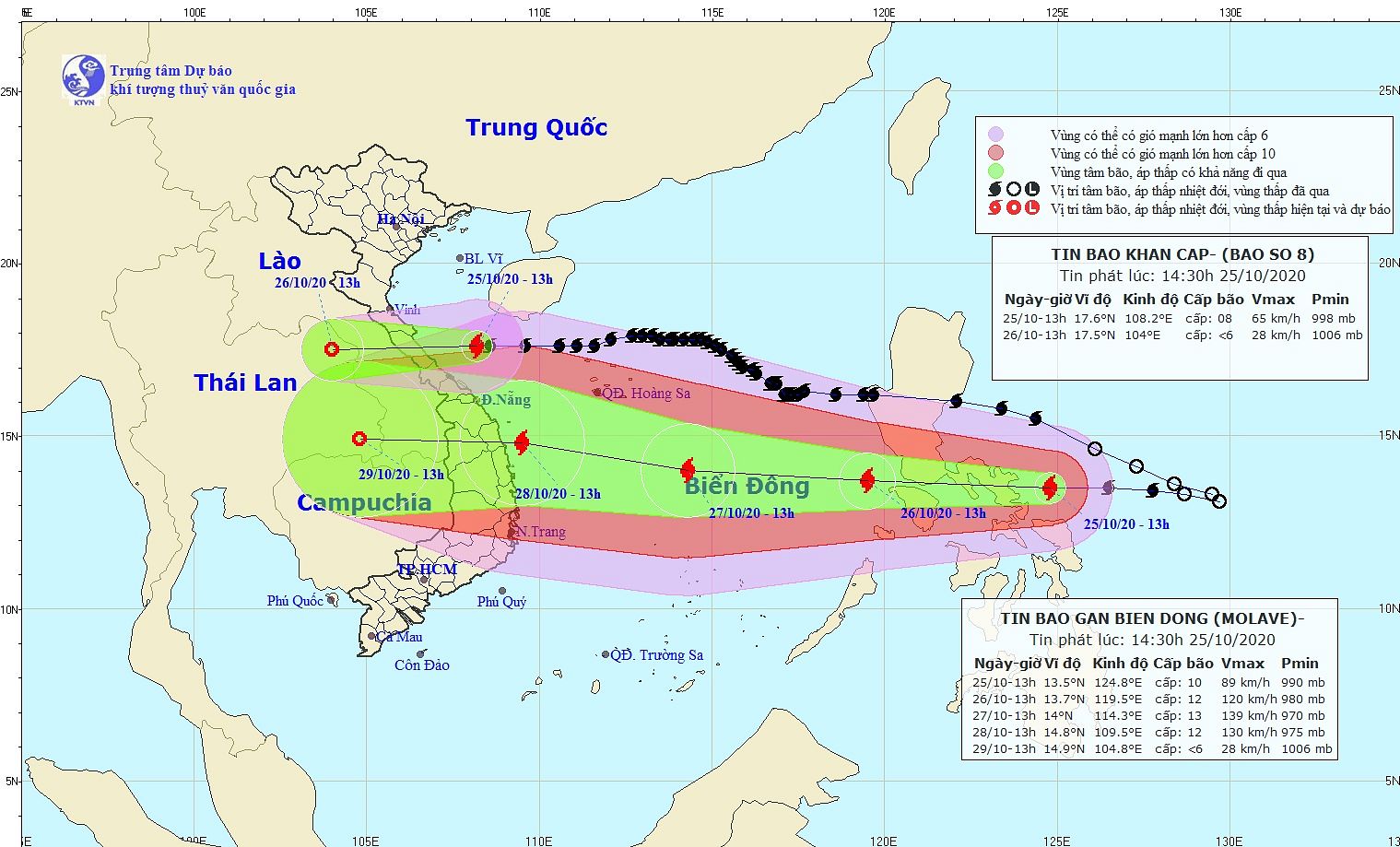October was a month of unceasing devastation and pain for central Vietnam. It started with unprecedented downpours; then consecutive typhoons hit; and sudden landslides turned deadly fast. A few weeks ago, Saigoneer's photographer followed a charity organization during their relief efforts into some of Quang Binh's hardest-hit communities. Here's a first-hand account from central Vietnam.
Monday, October 19
It's 5am and I'm tired from having to wake up early. I'm nervous too, as expectations started forming in my head of what I am about to experience. When I announced my intention of visiting the disaster-hit area, my friends and family members cheered me on, but a thought remains in my head: "Be very careful." Now, off to a flight to Dong Hoi in Quang Binh Province, where I was just exploring the famous Phong Nha caves a few months prior. It was there I learned of a new type of house equipped with plastic barrels, allowing them to float in case of flood. A big storm a few years ago had even completely submerged the utility poles, as the guide on that trip explained to me.

While memories of the past trip were still brewing in my head, the pilot warns that we're encountering some turbulence. "We will try to land the aircraft," he announces. He could barely finish the sentence when the first bump comes; the plane is jerking in a way I've never experienced before. "It's impossible, sorry, we'll land at a nearby airport," the captain informs us. After three grueling hours in the air, we land in Hanoi and I'm stuck at the terminal waiting to fly again in the afternoon. We manage to land in Quang Binh in one piece after the second flight.

Once at the hotel, without time to rest, my partner tells us that the local policemen have given us the address of one family whose relative passed away in a landslide. Without any time to take in our surrounding, the woman receives another incoming call: they have recovered the body of her late husband, as well as those of the young soldiers that everybody in the village has known since they were little kids. The family is summoned to the town sports center.



The mother of the soldier and his widow are kind enough to allow us to share that extremely personal and heart-wrenching moment of mourning. Upon arrival, all we can see are faces painted with anguish and the emotional fatigue of having cried for hours, nights and days since they first learned of the catastrophe. All the families and friends of the victims, and groups of curious locals, congregate at the door of the sports center waiting to be called, to face the bitter reality. The guard calls the neighboring family of the woman. With great sorrow, she mentions how her son grew up, studied and worked together with that neighbor boy. The family members come inside, their shadows on the floor lengthening away from the light, as if a harbinger to what they are about to witness.


Finally, we are next in the queue. Pure silence. "Không chụp (no photo)," the guard warns me. They escort us into the enclosure, leading us to an improvised funeral area with incense sticks provided by town officials. Sudden sobbing cut off the faint murmuring in the room: "Con ơi, con ơi." I feel a lump in my throat and it's difficult for me to hold the emotions down. Staying as silent as I can, I watch and listen, but tears start falling down my cheeks. Deep down, I know I need the emotional relief that way, but I also wish to share condolences and give the woman a tight hug.

Something holds me back, however. I am in many ways a puppet outside my stage. "Who am I to interrupt that moment? What the hell was I doing there?" similar thoughts fill my mind. When we reach the exit I try to keep my distance and go unnoticed. Well, as much as I can, as an almost two-meter-tall ông Tây with tear-stained cheeks. At last our time to go came, and we left the family alone with their grief. As I approach the woman, however, I feel it coming and break down. The woman starts to tear up again; it's an incredibly bittersweet moment, much superior to pure grief, because two people from different worlds and generations can share a common feeling — a real sense of empathy.
Tuesday, October 20
At 5am, after breakfast, the real adventure begins. We hop on a bus and joke with our sư phụ, traditional medicine practitioner Võ Hoàng Yên, who's always attentive and loving. The rain accompanies us without stealing the spotlight; it's been a constant for the past days. The bus stops in the middle of nowhere; from the outside, it looks just like any other house on the road. We plant the banner of our charity association and people begin to arrive. The TV cameras are ready and I begin to feel the sense of discomfort that would accompany me throughout the day.

The VND500,000 bills are placed inside envelopes. The crowds wait as the announcer goes down the list; others are there for whatever donations are available. The situation is not exactly what I expected. I want to be more active and be useful to the people.





After a speech by sư phụ, the envelopes are distributed in an orderly, almost monotonous manner. I decide to go for a walk to take in the scene. I want to get a feel of the people, and that's when my feelings start to shift, I begin to understand what I have already felt about the Vietnamese people for so many years: a sense of warmth, even under that relentless rain. Life goes on.





When I return to the makeshift donation area, I'm able to enjoy the situation in a more personal way. I start to understand why we are here. We get on the bus after gifting an envelope to an old woman carried by a very insistent man. The importance of the relief work is marked by that symbolic moment.




After several stops to deliver goods, hampered by traffic jams, we arrive at a place closer to what I had in my mind. It's arguably inaccessible, a dead-end shut off by a sea of water, where we delivered all kinds of goods.




Knowing what to expect, we arrive at a communal house next to a crossroads. Some very nice gentlemen bring out rice wine and 555 loosies, and it takes just a second to break the ice — these are my kind of people. Tuấn, with great charm, introduces us to the crowds as anh Ba Khía. Why not? Anh Ba Tuấn. There is much revelry.



We head to Hue and rest after another incredible vegan dinner. Until the next day.
Wednesday, October 21
It's 5am and everyone is on the bus again. Sư phụ informs me that today we will make our way into a more isolated and affected area around the old imperial capital. On the way and through the window of the bus, I am surprised to see many mausoleums and family tombs half-submerged in water. My travel partners share that it is a very typical practice in the region to acquire small plots of land and turn them into places of ritual for the dead.




Once in the vicinity of the village, we stop at a communal center where food, medicine, and life jackets are stored for those affected by the disasters, ready to be distributed. We load a tractor and set a course over the calm water.











We hang the banner bearing the name of our charity using some improvised poles, and I walk around, this time with an absolute peace of mind. I'm now able to take in the experience and interact with the local people. Here, the young and old take care of each other, with smiles on their faces, happy as if the recent string of calamities never happened.









After all, this is one of the true strengths and points of pride of the Vietnamese people: to be able to find hope and reasons to smile even during the most difficult situations — they have the soul of warriors and the strength of survivors.















